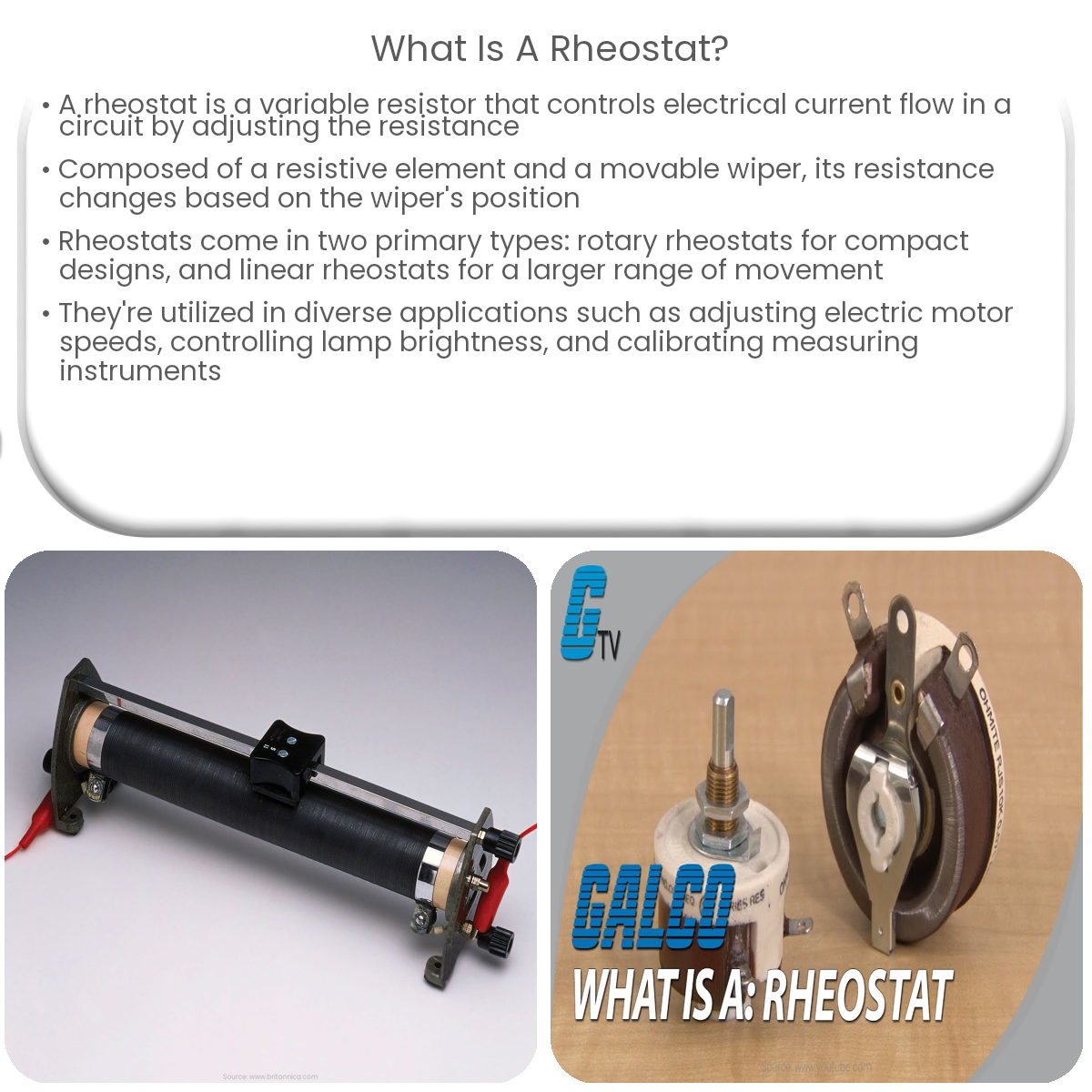A rheostat is a variable resistor that controls current flow in a circuit by adjusting its resistance, used in applications like motor speed control.
What is a Rheostat?
A rheostat is a type of variable resistor that is used to control the flow of electrical current in a circuit. It operates by adjusting the resistance to limit or increase the amount of current passing through it, making it a valuable component in a wide range of applications.
Construction and Working Principle
Rheostats are typically composed of a resistive element, often made from materials such as carbon, metal wire, or metal ribbon, and a movable wiper or contact. The resistive element forms a continuous path between two terminals, while the wiper slides along the resistive element to create a variable resistance between the terminals.
As the position of the wiper changes, so does the resistance of the rheostat, directly affecting the flow of current in the circuit. By increasing the resistance, the current flow is reduced, and vice versa.
Types of Rheostats
There are two primary types of rheostats based on their design:
- Rotary Rheostats: These rheostats have a circular resistive element and a rotating wiper, usually controlled by a knob. They are commonly used in applications where a compact design is required.
- Linear Rheostats: These rheostats feature a linear resistive element with a slider-type wiper. The wiper moves along the resistive element in a straight line, often controlled by a sliding lever or knob. Linear rheostats are typically used in applications where a larger range of movement is needed.
Applications
Rheostats are utilized in various applications for controlling the flow of electrical current. Some common uses include:
- Adjusting the speed of electric motors
- Controlling the brightness of lamps
- Regulating the temperature of heating elements
- Adjusting the gain of amplifiers
- Calibrating measuring instruments
Conclusion
Rheostats are versatile components that play an essential role in controlling the flow of electrical current in a circuit. They are used in a wide range of applications where precise control over current is necessary, such as adjusting motor speeds, lamp brightness, and amplifier gain. By understanding the construction, working principle, and applications of rheostats, engineers, hobbyists, and technicians can effectively utilize them in various electronic systems.


